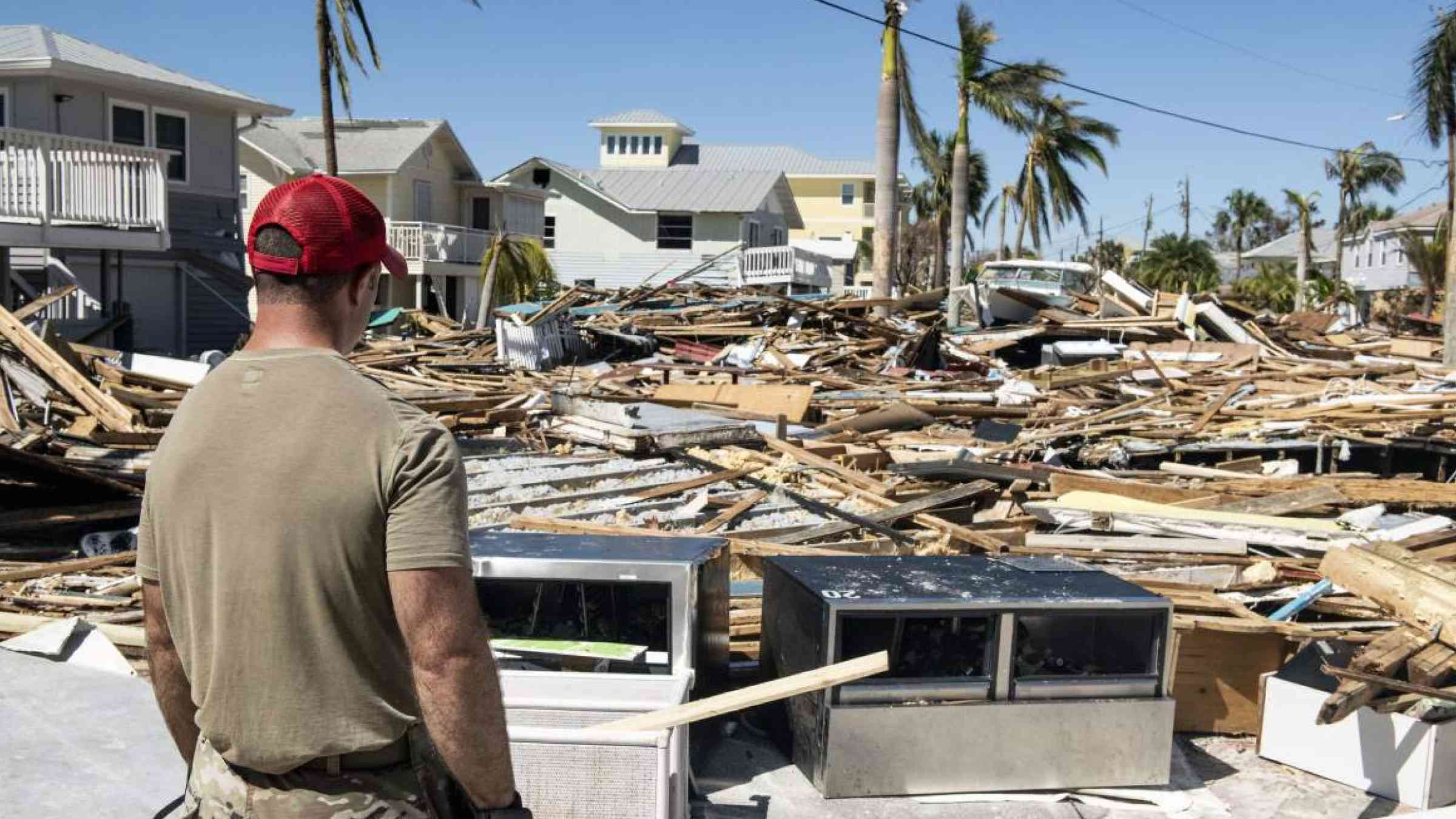AON: Global insured losses from disasters exceeded $130 billion in 2022, driven by second-costliest event on record

- Annual Weather, Climate and Catastrophe Insight report reveals $313 billion global economic loss from natural catastrophes
- Prominence of droughts and heatwaves highlighted growing importance of these perils in a warming world
AON Plc, a leading global professional services firm, today published its 2023 Weather, Climate and Catastrophe Insight report Opens in a new tab, which identifies global natural disaster and climate trends to help make better decisions to manage volatility and enhance global resilience. The report reveals that natural disasters caused a $313 billion global economic loss during the 12-month period under review - 4 percent above the 21st-century average - $132 billion of which was covered by insurance.
Data show that 2022 was the fifth costliest year on record for insurers, with approximately $50-55 billion of the global insured loss total resulting from Hurricane Ian in the United States - the second-costliest natural catastrophe in history from an insurance perspective, surpassed only by Hurricane Katrina in 2005, which resulted in nearly $100 billion in insured losses on a price-inflated basis.
The report also highlights that approximately 31,300 people lost their lives due to global natural catastrophe events in 2022. The total number of fatalities remains below average for now 12 years in a row; however, more than 19,000 of the fatalities were heat-related deaths in Europe alone, primarily as a result of heatwaves.
While a majority of total losses in 2022 were left uninsured, the 58 percent "protection gap" was one of the lowest on record, highlighting a positive shift in how businesses are navigating volatility through risk mitigation, and how insurers are providing further protection to underserved communities through access to capital.
"This report explores the events and costs of catastrophes and natural disasters in 2022 that created a staggering amount of economic loss," said Greg Case, CEO of Aon. "But this data also highlights a tremendous opportunity for us to continue to better serve clients. By working together on scalable solutions, we will not only mitigate risk, but bring together public, private and societal forces to accelerate innovation, protect underserved communities and strengthen the economy."
While technological innovation has allowed for better insight as catastrophes unfold and faster and more thorough assessments of damages after an event, the Aon study examines resilience and the ability to overcome climate-related consequences – not only for physical risks, but in areas like the health of the workforce, reiterating the need to build multi-faceted strategies that account for climate change risk mitigation on all fronts.
Further findings of the 2023 Weather, Climate and Catastrophe Insight report include:
- 421 notable natural disaster events were recorded in 2022, higher than the 21st century average of 396.
- 75 percent of global insured losses were recorded in the United States, which was higher than the average of 60 percent.
- Windstorm Eunice was the costliest individual European windstorm since 2010, with $3.4 billion in insured losses. Widespread hailstorms in France contributed to the second-highest natural disaster payouts for the country on record of €6.9 billion ($7.4 billion).
- Droughts and heatwaves severely impacted Europe, the United States, China and other regions and global insurance payouts for the drought peril were the second highest on record, at $12.6 billion globally.
- Flood losses in Australia broke the historical record as La Niña conditions persisted for a third year and Sydney recorded the highest annual rainfall.
- Monsoonal floods in Pakistan had a far-reaching humanitarian impact on the country. In a summary of the 2022 monsoon season, the Pakistan Meteorological Department noted that country-wide rainfall from July to September was 175 percent above average.
- Both severe drought conditions and a prolonged rainy season in different regions of Latin America reduced agricultural crop yield across the region.
"The devastation that disasters caused around the world demonstrate the need for wider adoption of risk mitigation strategies, including better disaster management and warning systems that improve resilience," said Michal Lörinc, head of Catastrophe Insight at Aon. "While impacts of climate change become increasingly visible around the world, it is the socioeconomic aspects, demographics and wealth distribution that remain a major driver of financial loss. Data in this report will help guide organizations to not only enhance their own risk mitigation but take action to close the protection gap globally to better protect the communities in which we live and work."
The top 10 global economic loss events in 2022 were:
|
Date |
Event |
Location |
Deaths |
Economic |
Insured |
|
($ billion) |
($ billion) |
||||
|
09/27 – 10/01 |
Hurricane Ian |
United States, Cuba |
157 |
95.5 |
52.5 |
|
Annual |
European Drought |
Southern, Western & Central Europe |
N/A |
22 |
3 |
|
Annual |
U.S. Drought |
United States |
N/A |
16 |
8 |
|
06/14 – 10/30 |
Pakistan Seasonal Floods |
Pakistan |
1,739 |
15 |
0.1 |
|
06/01 – 09/30 |
China Seasonal Floods |
China |
195 |
15 |
0.4 |
|
03/16 |
Fukushima Earthquake |
Japan |
4 |
9.1 |
2.9 |
|
02/23 – 03/31 |
QLD & NSW Floods |
Australia |
22 |
8 |
4 |
|
Annual |
China Drought |
China |
N/A |
7.6 |
0.2 |
|
02/18 – 02/19 |
Windstorm Eunice |
Western & Central Europe |
17 |
4.5 |
3.4 |
|
05/17 – 10/31 |
India Seasonal Floods |
India |
2,135 |
4.2 |
0.1 |
|
All other events |
~27,100 |
115.6 |
57.4 |
||
|
TOTALS |
~31,300 |
313 billion |
132 billion |
||
The full report and a short video are available on Aon's interactive microsite Opens in a new tab. Along with this report, readers can access current and historical natural catastrophe data and event analysis at catastropheinsight.aon.com.